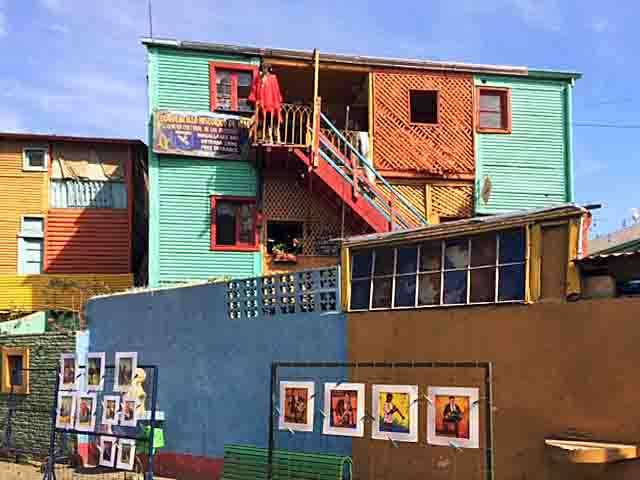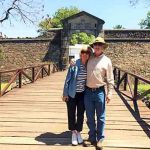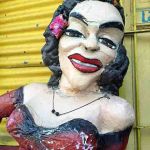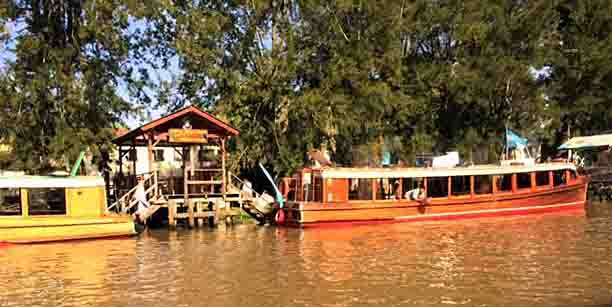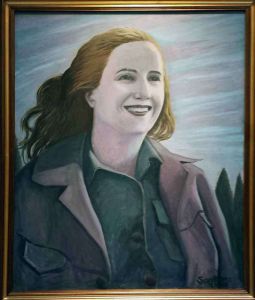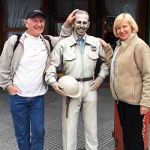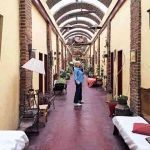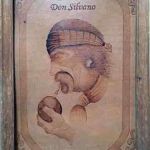Buenos Aires & around
In the first of this three-part guest blog, our South African friend Karen von Gerlach entertains us with her lively account of life in Buenos Aires.
Monday, 19 October 2015
Everything had been carefully planned for months, new suitcases had been bought and perfectly packed (at least in my case; Kai packs his suitcase in an hour or less) at home everything had been organised and our pre-booked taxi arrived on time. We were beaming and happy to leave at last.
And then, at the turn-off to the airport, Kai started looking for his wallet. NO wallet….. He had left it at home! Our friendly taxi driver turned around and at “breakneck” speed drove home. Off we went for a second time. Now that was the start of our holiday to Argentina – nerves frazzled and emotions barely kept under control – but we made it in time for our Turkish Airline flight via Johannesburg to Istanbul.

From here on it was plain “sailing” or flying, except that the flight turned out to be really long – 36 hours by the time we eventually arrived at Ezeiza Airport in Buenos Aires – via Sao Paulo.
We were directed to a bus, to take us into town (22kms), and from there we took a taxi to our hotel in Belgrano, the Urbanica Suites Hotel. By the time we arrived at the hotel we were exhausted and ready to fall over.
The Urbanica Suites Hotel, with its comfortable, spacious accommodation, fully-equipped kitchen, queen-size bed and all the modern amenities like a flat-screen cable TV and free internet connection and most of all its very friendly, efficient and helpful staff was to become a real home from home situation during our time in Buenos Aires!
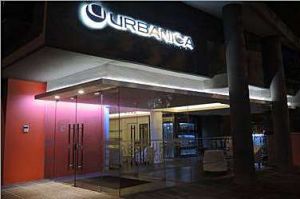
Wednesday, 21 October 2015
Off we went on a city tour to try and acquaint ourselves a little with this sprawling, huge, fascinating, beautiful city. We were pretty bleary-eyed and a little disoriented after our long flight and late night; not to forget the jet lag. The time difference between South Africa and Argentina is 5 hours! Still we were ready for the adventures to come and raring to go.
Words fail me when it comes to describing this amazing metropolis. Buenos Aires is one of the largest cities in Latin America. The federal district is populated by around 3 million people. The entire metropolitan area (Greater Buenos Aires) is populated by 12 million people; a remarkable one third of the country’s population. Of its 47 barrios (neighborhoods), fewer than 10 are on what might be called the tourist trail, and these are conveniently stacked one atop the other on the city’s eastern edge. Most of the city’s attractions are concentrated in this north-south “corridor” along the shoreline of the Rio de la Plata. And this is where the city tour was going to go.
I can only mention a few of the highlights – this city is just too overwhelming. Buenos Aires would take many weeks and even months to fully explore. Our journey started on the Avenida del Libertador, in the barrio of Belgrano. Belgrano is divided into four sub-sections.’Belgrano C’ is the commercial district. ’Belgrano R’ is a wealthy residential area with lovely ivy-strewn mansions. ‘Bajo Belgrano’ or ‘Belgrano Chico’ contains Ciudad Universitaria, part of the university of Buenos Aires, and Chinatown. The 37-block area of ‘Barrio River’ is so-called because it contains the stadium for the River Plate soccer team. Argentinians are passionate about their soccer. On Thursday nights streets are closed off for the soccer fans, which stream into the stadium by their thousands and traffic comes to a standstill. Since the 19th century Belgrano, along with neighbouring Coghlan, was home to upper-middle class British immigrants. The influence is seen in Victorian-era homes and schools such as the Belgrano Day School and the Buenos Aires English High School. It is a well-to-do neighborhood that also has a thriving nightlife and social scene. It is nearly impossible to walk more than five Belgrano blocks without running into a beautiful plaza or a stretch of green alongside a busy road. Many fancier but not quite ostentatious locales are tucked away on less-travelled streets, between apartments, schools and an abundance of supermarkets.
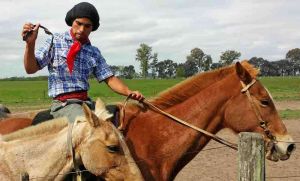
Palermo was the next stop on our way to the inner city. What impressed me most was the series of beautiful parks and gardens of Palermo, where we saw families picnicking, passing round their gourds of yerba mate, runners training for the next marathon, young couples indulging in public displays of affection and of course lots of babies and dogs with their dog walkers. We drove past the Palermo Lakes, and saw the massive Hipodromo Argentino, or horserace track and the Campo Argentino de Polo, just across the street. Kai was impressed and would have a story to tell his horse racing partners in Somerset West.
Next stop the barrio of Recoleta. Opposite the Museo Nacional de Bellas Artes, I was in awe of the Florali Genrica, a giant steel and aluminium flower that opens and closes with the sun. What also stood out for me was the mounted statue of General Alvear, apparently one of the most spectacular of Buenos Aires’ monuments. Also the Palais de Glace next to it, an early 20th century ice-skating rink that became a cabaret venue and nightclub (Carlos Gardel, who is revered by the Argentinians as tango’s first international superstar of tango was allegedly shot here in 1915 by Che Guevara’s father, Ernesto?!?).
Absolutely mind-blowing is of course the Avenida 9 de Julio, one of the world’s widest and I guess well-known streets, measuring 140 meters from sidewalk to sidewalk and with up to 7 traffic lanes in each direction. Everything about it is big; big billboards, big buildings, big trees and of course the big Obelisk. I had never seen something like this before!
Locals seem to talk about the city in terms of “North” and South”. Below Avenida Rivadavia, which runs about 16kms east-west from the Casa Rosada to the edge of the city und unofficially divides the city into its two halves, are the city’s oldest residential areas; the streets are narrower and darker, the population more densely packed, and the vestiges of the city’s industrial and bohemian past more evident. North of Rivadavia, the area which we had just driven through, the city opens up into more spacious avenues, plazas and parks, with monuments, embassies, and Parisian-style apartment blocks replacing the tenements and warehouses of the south.
We decided to get off at La Boca, at the southern tip of the city, which is famous for its pastel colored tin houses, where dock workers used to live in the 19th century, and for the raucous restaurants where tourists come for a lively evening’s entertainment. We were hungry by now, or at least I was – Kai seems to be able to live off thin air most of the time -, and then we explored the Boca. What an interesting place, with its brightly colored murals of couples dancing the tango, speakers set out on the sidewalk blaring music. We actually saw a couple dancing the tango on the street. La Boca is also home to the country’s most famous soccer team, Boca Juniors. Their stadium La Bombonera (The Chocolate Box) draws fans from all over the city. It is a fascinating part of town, no doubt.
The route back took us past the vibrant, renovated docklands of Puerto Madero. The Puerto Madero neighbourhood has a pedestrian walkway extending the length of the port, and includes yacht clubs and most of BA’s most modern tower blocks and hotels. Since 2002 a fresh round of building and renovating has taken place, and a cluster of impressive skyscrapers has risen from the rubble of this former wasteland, and real estate prices, are by some estimates, the highest in South America.
By now we were exhausted but a huge feast was awaiting us. We went by taxi to the Rodizio, a well-known restaurant right on the Rio de la Plata. And then the food, – meat and more meat and more meat, as Kai said: “meat from the head to the bum”, and everything included. We were introduced to “Chorizos, morcillas, mollejas, asado, bondiola de cerdo, pollo, colita de cuadril, etc. Offal is priced in Argentina, with “chinchulines” (small intestine) and “mollejas” (sweetbreads) and much more. Kai sniffed at this and declined some of it!! I was wary too. The Argentinians are known for their love of meat, producing the most succulent beef in the world; and after such a sumptuous lunch we again ate meat that evening with friends who live here. It was a very happy evening and lasted until the early hours of the morning. It is such a pity that we are all so far apart in this big world!!
Thursday, 22 October 2015
By 08h00 we were in front of our hotel to go to Puerto Madre Harbour to get onto the Buquebus, a fast catamaran, for our trip to the City of Colonia de Sacramento in Uruguay. Lots of hot, steaming coffee was welcome during the one hour and fifteen minutes cruise, just to get us back into some semblance of a normal state.
Colonia de Sacramento is situated on a peninsula right across from Buenos Aires. Founded as a Portuguese colony in 1680, the town yo-yoed between Spanish and Portuguese rule for over a century before being incorporated into the new independent state of Uruguay in 1828.
The city is small and very pretty. The main thing that struck me was the general laid back atmosphere, softened even more so by the leafy streets and abundance of flowers. We strolled along its cobbled streets and squares with centennial trees, past well-preserved colonial buildings, stopping at souvenir shops, small museums and eventually a little restaurant where we had “Milanesa” (a breaded veal cutlet), served a la Napolitana (topped with tomato sauce, ham and cheese), which seems to be just another signature dish that the Argentinans like to indulge in. On the topic of food, other Italian imports such as pizza, pasta and helado ice cream are also very popular, as well as the ever present empanadas. And all this washed down with a good wine; one of Argentina’s stock grape varieties, Malbec, is very good, but Cabernets and Pinots and Bonardos too are winning awards and turning up on supermarket shelves around the world. However, it would be wrong to call any of these things the national addiction. That is a role reserved for dulce de leche, the impossibly sweet caramel-like concoction which gets loaded onto pancakes, stuffed inside croissants, dolloped onto plates beside wobbly flans and sandwiched into alfajores (a type of cookie and another bona fide national obsession). Kai and I agreed, dulce de leche is nice but tooooo sweet for our palates.
The most interesting area of this port town is the Barrio Historico (Old Town), named a Unesco World Heritage Site in 1996. Its narrow cobble-stoned streets wind around well-preserved colonial buildings, many of which have been transformed into restaurants and handicraft stones.
I had a gelato here, which was delicious. We looked around the quaint little square, and climbed the lighthouse, which was built in 1857. The top of the lighthouse can be reached after climbing 111 steps, so we battled up the stairs, but the effort was well worth it, as this is the only way to enjoy a bird’s eye view of the city and the Río de la Plata.
We walked down the small Calle de los Suspiros (“Street of Sighs”) which leads to the waterfront. This was a sobering and frightening experience; centuries ago slaves were forced to move along this street to their final destinations. Shocking to think how human beings had to suffer here under the most brutal circumstances.
Talking about Río de la Plata, there’s also a small yacht club in the city with a pleasant marina full of small boats and yachts belonging to Uruguayans and Argentinians, as many affluent porteños (natives of Buenos Aires) have a holiday home here. We walked along the wharf there and had a little snooze in the sun. I think our long flight and all the activities since then were eventually catching up with us.
And back to the square to take some photographs. What is interesting is the number of old cars everywhere in Colonia! Cars from the beginning of the last century to the glorious 1960’s can be seen everywhere – some are there just for decoration, others are in full use! Mixing with these relics are some rather intrusive golf carts, which you can hire if you prefer to explore the city on four wheels! But then this city is really made for walking!!
And then it was back on the boat to Buenos Aires. The trip was very bumpy, and I had visions of an over-turned boat and floating on the bed of the Rio de la Plata forever and never seeing my daughter again but we had many giggles and arrived safely for a well-deserved night’s sleep.
Friday, 23 October 2015
For today we had laid on a trip to the Rio Parana Delta, a 300km network of waterways that stretches from central Argentina to the mouth of the River Plate. It’s a vast stretch of lush green land chopped into hundreds of islands by veins of water running in all directions. The islands on the northern edge of the delta, towards the border with Uruguay, are mostly uninhabited but near the gateway town of Tigre, there’s a thriving community of around 4,000 residents – and many more on summer weekends.
Again we left early, and this time we took a train, the Tren de la Costa from Maipu station in Olivos, heading north into Zona Norte, a belt of attractive suburbs, the most memorable one being San Isidro with its cathedral, handicraft markets and excellent places to eat and drink.
The final stop on the Tren de la Costa is Tigre, an attractive popular town at the mouth of the delta. Tropical fruit brought by boat from the Northern provinces is deposited here on route to Buenos Aires. But the principal economic activity revolves around the summer tourists and weekenders who come to fish, row, and water ski and cruise the winding channels and hundreds of little islands. We walked down the charming riverside promenade, Paseo Victorica which is lined with steakhouses and rowing clubs and admired the beautiful tree-lined streets and colourful flower beds. We bought tickets for the local water taxi at Stacion Fluvial, and off we went, wedged in amongst loudly gesticulating locals, babies and dogs. And what an experience it was, the rivers criss-crossing tributaries are the color of milky tea, weeping willow branches gently stir its surface, stilted wooden houses dot the banks and locals are dropped off at their local homes every couple of hundred meters.
Following our 50-minute boat ride away from Tigre we disembarked at El Gato Blanco Restaurante, the biggest restaurant in the Delta. What a beautiful setting with its view onto the river. The trout, which was recommended, with some good wine was excellent.

As we were about to leave, I noticed that my rucksack was missing and to my horror realized that I must had left it on the boat. Oh dear, oh dear, Kai’s face was telling a story, I felt terrible. Everything was in our rucksack, camera, cell phones, glasses, jackets and various other less important items. Fortunately no passports or flight tickets. I panicked and pleaded with the owner of the restaurant to contact the boat company, and from there on I had to pray hard. The restaurant owner had told us that a bag had been seen on a boat, and that it might be returned to us at Stacion Fluvial on our return. After our fraught return, lo and behold, there we saw it – on the roof a returning boat. We immediately searched through its contents and NOTHING was missing. Now for a South African this is nothing short of a complete miracle.
Saturday, 24 October 2015
Saturday – and it was my birthday. What a privilege to be able to celebrate my birthday in a city like Buenos Aires! Off we went to the city centre, first “per pedes” and then by bus. I had read a lot about Evita Peron and her iconic status in Argentina, and following in her footsteps I wanted to see where she was buried. The Cementerio de la Recoleta is well-known as the burial ground for the rich, famous, and/or powerful. In fact it is most probably Argentina’s most exclusive patch of real estate. We were very impressed by the different mausoleums, adorned with statues and various other decorations. In fact the cemetery reminded me a lot of Pere Lachaise Cemetery in Paris. One of the most visited tombs is that of Evita.
She is buried here with other members of the Duarte family, nine meters underground in – according to urban myth at least – a booby-trapped tomb built to withstand a nuclear strike. We had maybe expected more, the Duarte Mausoleum is fairly small and plain, however covered in bouquets of flowers by visitors from all over the world. It was somehow a somber experience, given how short her life had been and under what tragic circumstances she had died. The weather didn’t help either. It had by then started to rain, and Kai was keen to get to “ANY” pub in the vicinity because the Rugby was about to start, our Bokke against the All Blacks from New Zealand. And the rest is history….. Kai’s disappointment was palpable and nothing much could lift his spirits for the rest of the day.
But there was no reprieve, we carried on with our city tour, and took a taxi to the Plaza de Mayo and the Casa Rosada. From what I understand, the history of Buenos Aires began with the Plaza de Mayo, originally called Plaza del Fuerto (fortress) and used as a market place and social centre. The name and role of the plaza changed again with the British invasions of 1806 and 1807, and finally assumed its present name, following the declaration of independence, in honor of the month of May in 1810 when the city broke with Spanish rule. Today the Plaza is a rather down-at-heel square with its tall palm trees and attractive flower beds competing for attention with ever-present political demonstrations and carts loaded with plastic flags and other garish souvenirs. 1810 also marks the first mass rally in the Plaza, and subsequently Argentinians have poured into the Plaza to protest and celebrate most of the nation’s important events. 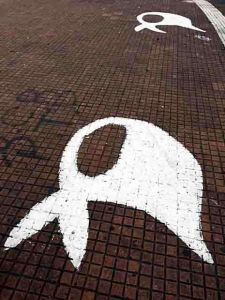 Many important historical events have been celebrated or protested against here, including in 1982 Argentinians flooded the Plaza to applaud General Galtieri’s invasion of the Malvinas/Falkland Islands. A few months later, they were back again, determined to oust the military government for having lied about their chances of defeating the British. But the most famous rallies have been those of the Madres de la Plaza de Mayo – the mothers of the many young people who disappeared during the “dirty war”. The white headscarves the Mothers traditionally wear at all the demonstrations have been depicted around the base of the pyramid, marking their weekly route. They continue to march every Thursday afternoon, protagonists in what they regard as the ongoing struggle for human rights in Argentina.
Many important historical events have been celebrated or protested against here, including in 1982 Argentinians flooded the Plaza to applaud General Galtieri’s invasion of the Malvinas/Falkland Islands. A few months later, they were back again, determined to oust the military government for having lied about their chances of defeating the British. But the most famous rallies have been those of the Madres de la Plaza de Mayo – the mothers of the many young people who disappeared during the “dirty war”. The white headscarves the Mothers traditionally wear at all the demonstrations have been depicted around the base of the pyramid, marking their weekly route. They continue to march every Thursday afternoon, protagonists in what they regard as the ongoing struggle for human rights in Argentina.
The most eye-catching structure in the Plaza is unquestionably the Casa Rosada, the seat of the executive branch of the government.
The huge building is painted in pink. I couldn’t quite make up my mind whether I liked it though! We decided to go inside, but I guess everybody was a little tired, so we just had a glimpse of the interior. What I can remember are huge photos of Evita and Juan Peron, as well as Che Guevara.
Flanking the Casa Rosada are the Banco de la Nacion, the Catredal Metropolitana, The Palacio Municipal (City Hall) and the Cabildo (Town Council.), all very imposing and impressive buildings.
We also visited the massive cathedral which is the seat of Buenos Aires’ archbishopric. There are 12 neoclassical pillars at its front that are said to represent the 12 apostles. Inside are five naves housing important art relics. Much more could be written about this beautiful cathedral. For Argentinians, the most important aspect of the cathedral is the tomb of General Jose de San Martin, Liberator of Argentina, Chile and Peru. An eternal flame burns in his memory on the far-right hand side of the colonnade as one faces the cathedral. 
We carried on along the Avenida de Mayo. Facing west from the Casa Rosada, the view down this avenue to the National Congress is spectacular. The Avenida de Mayo was originally designed to imitate a Spanish avenue; today however there is a mixture of influences with local adaptations that defy classification. As in much of the city “neoclassical”, French”, Italian and “Art Nouveau” do not adequately describe the potpourri of styles seen here. It was a feast for the eye, and I wished that we would have much more time to explore this fascinating, enigmatic, lively, mysterious, romantic city.
There are several well-known restaurants and cafes along the Avenida de Mayo, including Café Tortoni at No 825. Café Tortoni was once a talking shop for writers, intellectuals and is now a cultural landmark mostly frequented by tourists. No wonder, because we had to queue up and wait, and wait, and wait. Eventually we decided to leave, but the doorman allowed me to have a glimpse inside – marble tables, red leather seats, and bronze statues and elaborate mirrors which created the most regal of atmospheres. At least I had seen it and could “boast” that I had been to Café Tortoni!
- Cafe Tortoni interior
- …and exterior
Sunday, 25 October 2015
Sunday, and we decided to have a quiet day. It was the day of the long awaited presidential elections in Argentina. Argentina reminded us a lot of our country, marred by corruption, a weak economy, severe inflation as well as poverty and an unhappy electorate.
Monday, 26 October 2015
By now well rested, we left early in the morning, in a comfortable coach for the scenic ride through the Argentine pampas (plains) to Estancia Don Silvano, some 100kms northwest of Buenos Aires. After all, you cannot visit Argentina without exploring Gaucho country and culture.
After a pleasant drive, we arrived at the estancia (ranch), where we received a friendly welcome reception including empanadas (you get them everywhere), wine and juice. We then walked around the homestead, which reminded me very much of a farm here in South Africa with livestock, an old farmhouse, lovely garden, a windmill and horses. Kai was shocked and horrified at the condition of the horses though; they looked scraggly, thin to the bones and plain terrible. We fail to understand how animals can be neglected like this! Not a good advertisement for local tourism either.
One of the gauchos’s invited us to a mate drinking session and explained the ritual associated with drinking it to us. Not everyone in our group was amenable to sharing a straw though, a ritual that goes back to the early gaucho days. I was not too impressed either. But the drinking of mate tea is central to the Argentinian way of life. All along our long journey through Argentina we came across the locals sporting thermos flasks with hot water plus their various gourds in which they would mix their yerba mate leaves and then sip it through the bombilla. Quite a sight for us!
Back at the ranch, we tucked into a delicious asado (braai, grill) lunch of grilled sausages, ribs and chicken accompanied by potato salad and ice cream. Red and white wine, soda, water and coffee were also all included. During lunch we were entertained by a folkloric song and dance show, which was really entertaining. We were even given the opportunity to work off our meal by participating in some traditional Argentine dances.
After lunch, we were treated to three gauchos who showed off their horse-riding skills with their lassoes and boleadoras. Boleadoras consist of three stones or metal balls attached to the ends of connected thongs. Thrown with phenomenal accuracy by the gauchos, this weapon was originally designed to trip the legs of the fleeing prey. They were also showing off their incredible skills with ring races, the sortija where the gaucho would ride full tilt with a lance in his hand to catch a tiny rind dangling from a crossbar. We were amazed at how well they managed to do this. Fortunately their horses were in better shape.
So potent is the gaucho as a symbol of Argentinian rural culture, that people who have never even visited the country will form a picture in their mind when the word “gaucho” is dropped. A man on horseback, long knife tucked into his belt, silhouetted against the horizon of a flat, indefinite plain, oblivious to the hot sun beating down on his head, alone, homeless and most importantly free. Most gauchos these days would however view themselves as working men, not idealistic loners. And gauchos nowadays work mainly as ranch hands, herding and branding cattle, as well as entertaining guests on the various estancias.
Before heading back to Buenos Aires, we still enjoyed another glass of mate accompanied by sweet cakes with quince jelly. It was a very interesting and fun day.
Tuesday, 27 October 2015
Tuesday was another rest day.
Wednesday, 28 October 2015
Argentina is enormous – the eight largest country in the world. It says in a tourist brochure, if Argentina could be stretched out over Europe, with its northwest corner positioned over London, the country’s easternmost point would lie roughly over Budapest. Its southernmost tip, Tierra del Fuego would be roughly over Timbuktu in Mali, about a third of the way down the African continent. So we had to fly in fact eight times during our four-week adventure trying to catch just a glimpse of this truly fascinating country. And this doesn’t include our 36hr flights from Cape Town via Istanbul, Sao Paulo, and Buenos Aires and back again.
More to follow soon in our next post as we head south to Tierra de Fuego!
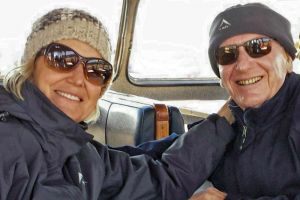 Karen and her husband Kai became friends as we met and travelled together in Botswana. This South African couple’s lively approach to life and extensive globe trotting makes them ideal contributors to The Luxury Couple. We hope you agree!
Karen and her husband Kai became friends as we met and travelled together in Botswana. This South African couple’s lively approach to life and extensive globe trotting makes them ideal contributors to The Luxury Couple. We hope you agree!
If you’d like to read the next two installments of Karen’s post see:
Argentina Part 2 – Patagonia & Tierra del Fuego
Argentina Part 3 – well, Chile really


 Let us plan your own inspiring journey to Argentina and throughout Central & S. America
Let us plan your own inspiring journey to Argentina and throughout Central & S. America
Why not download the TLC World guide brochure or give us a call today on 01202 030443, or simply click ‘enquire’ to submit your own personal itinerary request
SPECIAL NOTE: Zika Virus
Warnings about Zika Virus in South America are still current. To check if you’re vulnerable to it and its effects, please read this information from:
The Centers for Disease Control & Prevention


